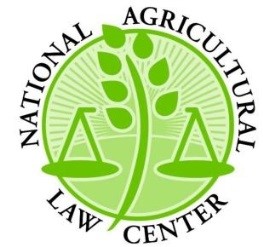A comprehensive summary of today’s judicial, legislative, and regulatory developments in agriculture and food. Email important additions HERE.
JUDICIAL: Includes landowner liability, labor, environmental law, and nutrition program issues.
In Lorin TOEPPE, Plaintiff and Appellant, v. CITY OF SAN DIEGO, Defendant and Respondent. D069662, 2017 WL 3187391 (S.D. Cal. July 27, 2017), a tree branch fell on plaintiff as she walked through a city park. She sued alleging the existence of a “negligently maintained eucalyptus tree.” City prevailed on summary judgment, arguing plaintiff was struck by the branch while standing on a trail and thus, subject to “trail immunity.” Plaintiff appealed, claiming trail immunity does not apply as her claim of a dangerous condition “is based on a negligently maintained eucalyptus tree, not the condition of the trail passing through the park.” Court sided with plaintiff and agreed the incident in this case does not give rise to trail immunity. Reversed for plaintiff.
In R. Alexander ACOSTA, Secretary of Labor, United States Department of Labor, Plaintiff, v. BLAND FARMS PRODUCTION & PACKING, LLC and Delbert Bland, Defendants. CV 614-053, 2017 WL 3259650 (S.D. Ga. July 31, 2017), issue was whether defendant’s employees were “employed in agriculture” when they processed Vidalia onions grown by farmers other than Bland Farms. Court recognized that under the Fair Labor Standards Act (FLSA), employers must pay overtime wages when their employees work more than 40 hours in a week, but employees “employed in agriculture,” are not entitled to overtime wages. Court held that defendant failed to pay its employees overtime in violation of the FLSA and awarded back wages and liquidated damages.
In AMERICAN PETROLEUM INSTITUTE, Petitioner v. ENVIRONMENTAL PROTECTION AGENCY, Respondent, American Chemistry Council, et al., Intervenors, No. 09-1038, 862 F.3d 50 (D.C. July 7, 2017), environmental organizations sought review of Environmental Protection Agency’s (EPA) final rule defining “solid waste” under Resource Conservation and Recovery Act (RCRA). Court of appeals held that the requirement that secondary hazardous materials be handled as “valuable commodities” was reasonable. Among other findings, the court held that the EPA “failed to demonstrate a rational basis for notice and recordkeeping requirements with regard to recycling hazardous wastes into products for which there was a legitimate analog that had comparable or higher levels of hazardous constituents.”
In STATE of Oregon, Plaintiff-Respondent, v. Christopher Ramoan WARREN, Defendant-Appellant. A156423, 87 Or.App. 159 (Or. Ct. App. August 2, 2017), defendant received public assistance and food stamps from the state and an investigation by the Department of Human Services revealed defendant lied on forms to obtain public benefits and failed to report income. Defendant appealed his conviction for two counts of unlawfully obtaining public assistance and argued the trial court erred when it disallowed his demurrer to the indictment. Court found district court’s disallowance of the demurrer harmless and affirmed decision.
REGULATORY: Includes EPA, FS, and NOAA rules and notices.
ENVIRONMENTAL PROTECTION AGENCY:
Rule EPA is withdrawing a direct final rule published on June 5, 2017, because one adverse comment was received during the public comment period. Info here.
Rule establishes an exemption from the requirement of a tolerance for residues of beta cyclodextrin, methyl ethers when used as an inert ingredient in pesticide formulations applied to growing crops pre-harvest limited to a maximum concentration of 40% by weight in the pesticide formulation. Details here.
FOREST SERVICE:
Notice the Fresno and Madera Counties Resource Advisory Committee (RAC) will meet in Clovis, California. Details here.
NATIONAL OCEANIC AND ATMOSPHERIC ADMINISTRATION:
Rule NMFS issues regulations to implement management measures described in Framework Amendment 4 to the Fishery Management Plan for the Coastal Migratory Pelagics Fishery of the Gulf of Mexico and Atlantic Region as prepared and submitted by the South Atlantic Fishery Management Council. Info here.
Rule NMFS is prohibiting directed fishing for Kamchatka flounder in the Bering Sea and Aleutian Islands management area. Details here.
Rule NMFS issues regulations under authority of the Western and Central Pacific Fisheries Convention Implementation Act to modify a limit on the amount of bigeye tuna that may be captured by U.S. longline vessels in the western and central Pacific Ocean, to 3,138 metric tons for calendar year 2017. Info here.
Notice NMFS has received a request from the U.S. Navy (Navy) for authorization to take marine mammals incidental to construction and demolition activities as part of a pier replacement project. Info here.
Notice NMFS has received a request from the U.S. Navy (Navy) for authorization to take small numbers of marine mammals incidental to conducting construction activities related to marine structure maintenance and pile replacement at facilities in Washington. Info here.
